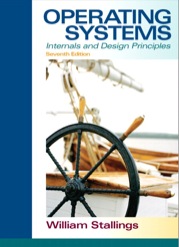Implementing Reader-Writer problem.
Implementing Reader-Writer problem.
Program to implement Reader-writer problem using mutex/ semaphore.
Download : Source Code
Description: According to this problem, multiple processes read the database at the same time, but if one process is updating (writing) the database, no other processes may have access to the database, not even readers.
Code :
#include<stdio.h>
#include<sys/types.h>
#include<stdlib.h>
#include<pthread.h>
#include<semaphore.h>
#define N 5
int b;
int readcount;
sem_t mutex,wrt;
void* w()
{
int i=1;
for(i=0;i<N;i++)
{
sem_wait(&wrt); //wait
b=i;
i++;
//Writing is performed
printf(“\nW :written =%d”,b);
sem_post(&wrt); //signal
printf(“\nW going to sleep..”);
sleep(2);
}
printf(“Writer is living”);
}
void * r(void * a)
{
int *rr =(int *) a ;
int i;
for(i=0;i<N;i++)
{
sem_wait(&mutex);
readcount++;
if(readcount==1)
sem_wait(&wrt);
sem_post(&mutex);
//Readind is performed
printf(“\nR :read=%d Reader no.=%d “,b,*rr);
printf(“\nReader%d:going to sleep…”,*rr);
sleep(2);
sem_wait(&mutex);
readcount–;
if(readcount==0) //to check last reader
sem_post(&wrt);
sem_post(&mutex);
}
printf(“Reader no.=%d living”,*rr);
}
void main()
{
pthread_t w1,w2,r1,r2;
int rr1=1,rr2=2;
b=0;
readcount=0;
printf(“\n value of shared variable is %d”,b);
sem_init(&(wrt),0,1);
sem_init(&(mutex),0,1);
//Creating Threads
pthread_create(&w1,NULL,w,NULL);
pthread_create(&r1,NULL,r,(void * )&rr1);
pthread_create(&r2,NULL,r,(void * )&rr2);
pthread_join(w1,NULL);
pthread_join(r1,NULL);
pthread_join(r2,NULL);
}















